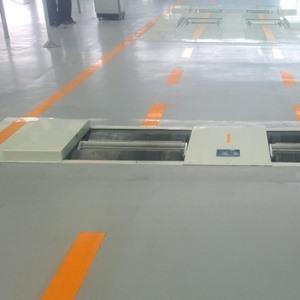The final assembly inspection line is an important part of the automotive parts industry. It can ensure that the quality and performance of the automobile meet the specified requirements. There are many inspection items that need to be inspected on the final assembly inspection line. The following are some simple inspection items and their corresponding inspection contents:
1. Appearance inspection: Mainly check whether there are defects, scratches, paint leaks and other undesirable phenomena on the body.
2. Power system inspection: including checking the working environment of the tires, whether the emissions are qualified, whether there are any problems with the fuel injection system, etc.
3. Suspension network inspection: Check whether the suspension system of the vehicle is stable during driving, and whether there is any abnormal noise, etc.
4. Braking system inspection: including whether the brakes are flexible, whether the braking force meets the standards, brake pad wear, etc.
5. Safety network inspection: Check whether the airbag is installed, whether the seat belt is intact, etc.
6. Electrical network detection: including whether the electrical equipment such as lights and horns are working properly.
7. Internal configuration inspection: such as whether the seat is flexible to adjust, whether there is any problem with the multi-function steering wheel, whether there is any problem with the air conditioner, etc.
In general, there are many inspection items on the final assembly inspection line, and each one is very important. Only through strict inspection can the quality and performance of the car be ensured, providing users with a more reliable and safe car experience. Automobile manufacturers should attach great importance to various inspections on the final assembly inspection line, and continuously improve the inspection process to improve the quality and competitiveness of the car.

Related Industry Knowledge
- ADAS advanced auxiliary driving calibration equipment calibration purpose
- What is the function of the high-speed ABS brake test rig?
- Introduction to non-contact four-wheel aligner
- Main configuration of ABS brake table
- Safety inspection project
- Comprehensive drum test bench product introduction
- Tire pressure equipment operating instructions
- Non-contact four wheel aligner operating procedures
- Application of laser measurement technology in automobile four wheel aligner
- Dynamic four wheel aligners have formed a trend
- Market prospects for vehicle inspection
- Dynamic 4-wheel alignment instrument assembly process before testing
- Revolutionizing car maintenance experience - 3D laser 4-wheel alignment
- Technical Principles and Development Trends of Electric Chassis Dynamometer
- Technical advantages and future prospects of comprehensive vehicle off-line diagnostic equipment
- What are the benefits of a dynamic 4-wheel alignment for a car?
- How to use the dynamic 4 wheel alignment effectively?
- The use and maintenance of dynamic 4-wheel alignment
